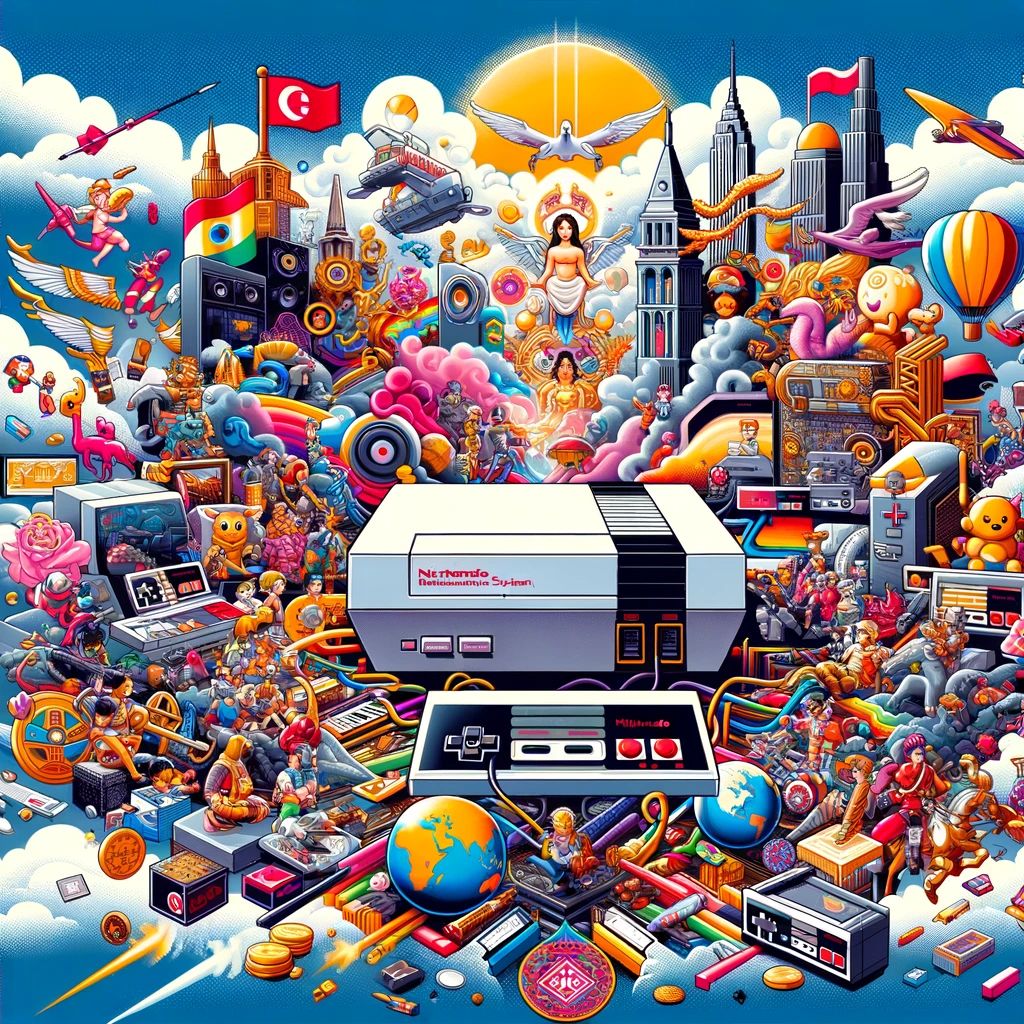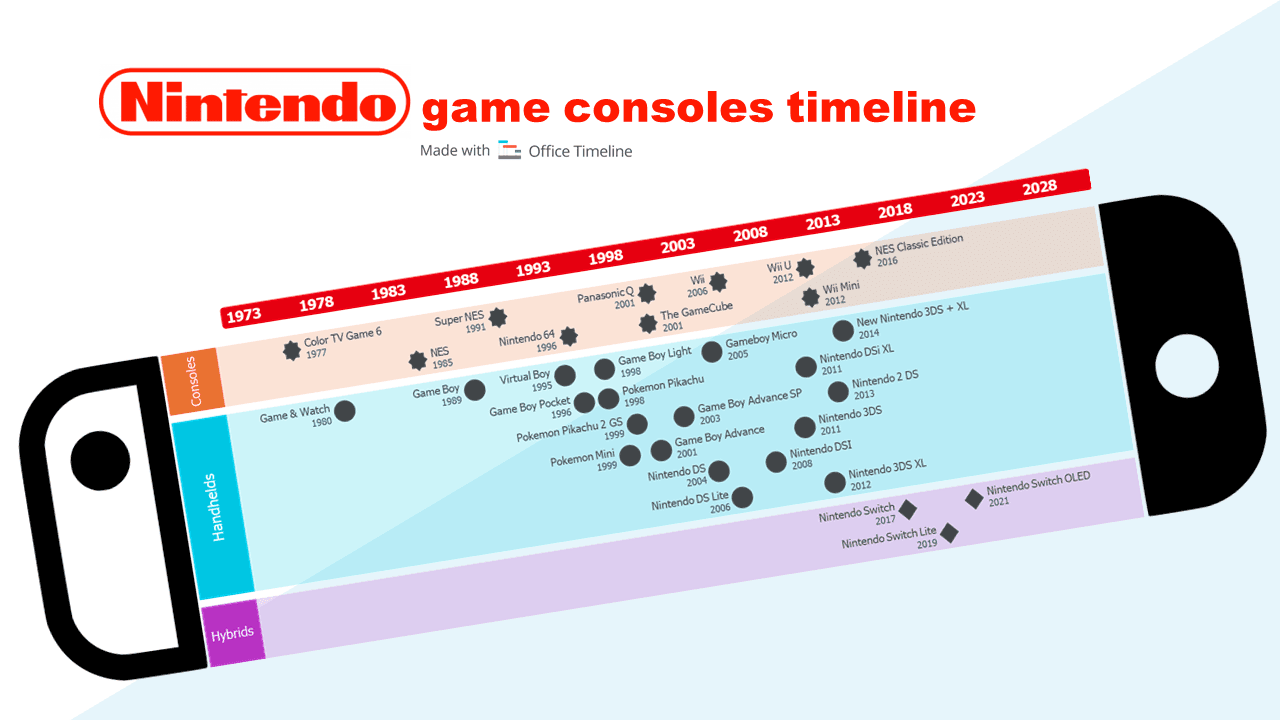Nintendo

Nintendo
In 1889, Fusajiro Yamauchi started a small playing card company in Kyoto, Japan. He called it Nintendo Koppai. The company's first products were handmade hanafuda cards, used for traditional Japanese games.
For decades, Nintendo stuck to cards. It was a steady business, but not exactly a path to riches. Then, in 1959, something changed. Hiroshi Yamauchi, the founder's grandson, visited the United States. He saw the massive card manufacturer there and realized Nintendo needed to innovate or die.
"If we don't change with the times, we'll be left behind," Yamauchi said.
This sparked a period of experimentation. Nintendo tried its hand at instant rice, love hotels, and even a taxi service. Most failed. But these failures taught valuable lessons.
The turning point came in 1975 when Nintendo secured the rights to distribute the Magnavox Odyssey video game console in Japan. This opened their eyes to the potential of electronic entertainment.
In 1977, Nintendo released its first home video game console, the Color TV-Game. It was basic - just a few simple games built into the hardware. But it sold over a million units. Nintendo had found its niche.
The real breakthrough came in 1981 with the release of Donkey Kong. Created by a young artist named Shigeru Miyamoto, it was Nintendo's first global hit. Miyamoto would go on to create many of Nintendo's most beloved franchises.

"The essence of my job is to make people smile," Miyamoto once said.
But success brought challenges. The video game crash of 1983 nearly wiped out the entire industry. Many retailers swore off video games entirely. Nintendo had to convince them to give their new console, the Nintendo Entertainment System (NES), a chance.
They succeeded. The NES revived the industry and established Nintendo as its leader. By 1990, Nintendo had a 90% share of the US video game market.
Yet Nintendo faced a major challenge in the mid-90s with the rise of Sony's PlayStation. The PlayStation's 3D graphics and CD-based games threatened to make Nintendo's cartridge-based systems obsolete.
Nintendo's response? Double down on what they did best: making fun games. While Sony chased mature audiences, Nintendo focused on all-ages appeal with games like Super Mario 64 and The Legend of Zelda: Ocarina of Time.
"The true value of entertainment lies in how much fun you have, not how fancy the technology is," said Satoru Iwata, who became Nintendo's president in 2002.
This philosophy led to the Wii in 2006. Its motion controls were revolutionary, opening up gaming to a whole new audience. The Wii sold over 101 million units, becoming Nintendo's best-selling home console.
Today, Nintendo continues to innovate with the Switch, a hybrid home/portable console that's sold over 122 million units as of 2023. The company's market cap stands at over $50 billion.

Throughout its history, Nintendo has faced numerous challenges and setbacks. But by staying true to its core values of fun and innovation, it's managed to not just survive, but thrive.
As current Nintendo president Shuntaro Furukawa puts it: "Above all else, we must never forget to make our games fun and entertaining."
From handmade playing cards to global gaming giant. That's Nintendo's story. A century-long journey. Focused on fun.
Lessons
Lesson 1: Embrace your quirks. Nintendo never tried to be Sony or Microsoft. They didn't chase photorealistic graphics or hardcore gamers. Instead, they leaned into their oddball ideas. Motion controls. Portable consoles. Cardboard accessories. These weird choices set them apart. As Shigeru Miyamoto, the creator of Mario, once said: "A delayed game is eventually good, but a rushed game is forever bad." Nintendo took their time to get their quirky ideas right. And it paid off.
Lesson 2: Build for non-customers. Nintendo didn't just target gamers. They went after everyone else. The Wii wasn't for hardcore players. It was for grandmas and little kids. People who'd never touched a controller before. This strategy opened up a whole new market. As Reggie Fils-Aimé, former president of Nintendo of America, put it: "Our competitors are not other console makers. Our competitors are anything that takes time away from playing games."
Lesson 3: Own the full stack. Nintendo makes the hardware and the software. This vertical integration gives them control over the whole user experience. It's why their games feel so polished on their systems. It's also a huge competitive advantage. No one else can make a Mario game for a Nintendo console.
Lesson 4: Price for profit, not market share. Nintendo rarely discounts their products. They maintain high margins. Even when sales slow down. This strategy keeps them profitable even when they're not on top. It's why they have over $9 billion in cash reserves. Satoru Iwata once said: "We're not trying to compete on price. We're trying to compete on uniqueness."
Lesson 5: Create shared experiences. Nintendo designs games that bring people together. In the same room. This focus on local multiplayer sets them apart in an increasingly online world. It's why their games are popular at parties. As Shigeru Miyamoto put it: "What if everything was multiplayer? What if everything was connected?" Nintendo answered this question differently than most. They connected people in the same space, not just online.
Speeches
- Shoshinkai 1995, Nintendo President Yamauchi's opening remarks
- Nintendo President Satoru Iwata's Unseen Speeches, #1
Videos
- Super Mario: How Nintendo Conquered America by Jeff Ryan
- Console Wars: Sega, Nintendo, and the Battle That Defined a Generation by Blake J. Harris
- Game Over: How Nintendo Conquered The World by David Sheff
- The Big Book of Nintendo: The Ultimate Guide to the Very Best of Nintendo by Future Publishing Ltd
- The Ultimate History of Video Games, Volume 1: From Pong to Pokemon and Beyond by Steven L. Kent
.png)








.png)

.png)
.png)
.png)
.png)


.png)
.png)






















.png)




.png)


.png)






.png)

.png)


.png)
.png)